- Home
- /
- Healthy Meal
- /
- The Methods of Healthy...
- /
- The Methods of Healthy...
- 1. Understanding Nutrient Retention in Cooking
- 2. Steaming: The Pinnacle of Nutrient Preservation
- 3. Sautéing: Quick and Healthy Flavors
- 4. Grilling: Harnessing the Power of Open Flames
- 5. Baking and Roasting: The Oven’s Magic
- 6. Slow Boiling: Gentle Cooking for Delicate Delights
- 7. Boiling: Simple and Wholesome
- 8. Slow Cooking: Set It and Forget It, But Not Your Health
- 9. Raw Food: Embracing Nature’s Bounty
- 10. Combining Cooking Methods for Optimal Nutrition
- 11. Special Considerations for Specific Diets
- 12. The Future of Healthy Cooking: Innovations and Culinary Wellness
In the labyrinth of flavors, where tradition meets innovation, and where taste intertwines with wellness, the art of healthy cooking emerges as a culinary odyssey. Beyond the confines of mere sustenance, the kitchen becomes a canvas for creativity, a laboratory for nutritional exploration, and a sanctuary where the alchemy of ingredients transforms into wholesome delights. Join us on a journey through the diverse realms of culinary wisdom and cutting-edge innovation, as we unravel the secrets, embrace the traditions, and envision the future of healthy cooking—a harmonious symphony where every dish is a celebration of flavor, nourishment, and the joyous union of art and science. Welcome to a world where the sizzle of the pan and the aroma of spices tell a story of well-being, where the kitchen is not just a place to cook but a stage for a culinary adventure that transcends taste to touch the very essence of a vibrant, health-conscious life.
1. Understanding Nutrient Retention in Cooking
1.1. The Role of Heat in Food Preparation: Unraveling the Culinary Chemistry
Cooking is an art that involves the skillful application of heat to transform raw ingredients into delectable dishes. Yet, beneath the surface of this seemingly simple act lies a complex interplay of chemical reactions that can significantly influence the nutritional content of our meals.
a. Heat and Nutrient Stability
Understanding the impact of heat on nutrient stability is crucial for preserving the goodness of the foods we consume. Different nutrients respond differently to varying temperatures. For instance, water-soluble vitamins like vitamin C are susceptible to degradation when exposed to high heat, while fat-soluble vitamins like vitamin A are more stable under such conditions. Striking the right balance becomes an intricate dance, where the duration and intensity of heat determine the fate of essential vitamins and minerals.
b. Maillard Reaction: The Culinary Alchemy
The Maillard reaction, often referred to as the “browning reaction,” is a fascinating chemical process that occurs when proteins and sugars are exposed to heat. This reaction not only imparts color and flavor to our food but also alters its nutritional composition. While the Maillard reaction enhances the taste and appearance of many dishes, it’s essential to strike a balance, as prolonged exposure to high temperatures can lead to the formation of potentially harmful compounds.
c. Enzymatic Changes: A Delicate Balance
Enzymes, the biological catalysts responsible for numerous chemical reactions in food, are highly sensitive to heat. Cooking can either activate or deactivate enzymes, depending on the desired outcome. For instance, blanching vegetables before freezing halts enzymatic activity, preserving their texture and nutritional value. Conversely, overcooking can denature enzymes, resulting in a loss of flavor, color, and nutritional potency.
d. Retaining Water-Soluble Nutrients
Water, often considered both a friend and foe in the kitchen, plays a crucial role in nutrient retention. While it can leach certain water-soluble vitamins into cooking liquids, savvy culinary techniques such as steaming and microwaving can help minimize these losses. Understanding how to harness water’s properties empowers cooks to create dishes that are not only delicious but also nutrient-rich.
In navigating the intricacies of heat in food preparation, a chef transforms into a culinary scientist, meticulously orchestrating reactions to ensure the final masterpiece is both a feast for the senses and a nutritional powerhouse. The next sections will delve into specific cooking methods, each showcasing a unique approach to preserving the nutritional integrity of our meals.
1.2. The Role of Frost in Food Preparation: A Chilled Symphony of Preservation
While the primary focus in cooking often revolves around heat, the role of frost in food preparation is a lesser-explored but equally vital aspect of nutrient retention. The use of freezing techniques can not only extend the shelf life of perishable ingredients but can also serve as a strategic tool in maintaining the nutritional richness of our culinary creations.
a. Preserving Freshness Through Freezing
Frost, in the form of freezing, acts as a natural pause button for the deterioration of food. By lowering the temperature, the metabolic processes that lead to nutrient degradation are slowed down, allowing foods to retain their freshness, texture, and essential nutrients for more extended periods. This preservation method is particularly beneficial for fruits, vegetables, and even some types of seafood.
b. The Cryogenic Pause
Freezing introduces a state of suspended animation for microorganisms, enzymes, and chemical reactions. This cryogenic pause is instrumental in retaining the nutritional integrity of food by preventing the degradation of vitamins and minerals. However, it’s crucial to freeze foods at their peak ripeness to capture and maintain their optimal nutritional value.
c. Locking in Nutrients
Unlike certain cooking methods that may lead to nutrient loss, freezing is a process that locks in the existing nutritional content. This is particularly advantageous for heat-sensitive nutrients like vitamin C, as well as for foods with high water content. By carefully freezing items such as berries or leafy greens, we can enjoy the benefits of these nutrient-packed ingredients long after their seasonal availability.
d. Maintaining Texture and Flavor
Beyond nutrient retention, frost plays a pivotal role in preserving the texture and flavor of foods. The crystallization of water within the food matrix minimizes cell damage, ensuring that the frozen produce retains its structure. When properly thawed, frozen ingredients can often mimic the freshness and taste of their just-harvested counterparts.
e. Best Practices in Freezing
To leverage the benefits of frost effectively, understanding proper freezing techniques is essential. Quick freezing, vacuum sealing, and appropriate packaging can all contribute to maintaining the highest possible quality of frozen foods. Additionally, a gradual thawing process, either in the refrigerator or under controlled temperatures, helps to further preserve the nutritional and sensory attributes of the ingredients.
In the grand symphony of cooking, the role of frost provides a harmonious counterpoint to the heat-centric techniques. By embracing freezing as a culinary ally, chefs and home cooks alike can extend the lifespan of seasonal treasures while safeguarding the nutritional potency that makes these ingredients invaluable contributors to a health-conscious diet.
1.3. The Role of Salt in Food Preparation: Balancing Flavor and Nutrient Retention
Salt, a fundamental component in kitchens worldwide, is not only a flavor enhancer but also plays a nuanced role in nutrient retention during food preparation. While excessive salt intake is associated with health concerns, understanding how to wield this culinary staple judiciously can unlock a harmonious marriage of taste and nutritional preservation.
a. Flavor Amplification and Palate Elevation
Salt has an unparalleled ability to enhance the natural flavors of ingredients. By interacting with taste receptors, it not only adds a savory dimension but also heightens the perception of other taste elements. When used judiciously, salt can transform a simple dish into a symphony of flavors, making it a valuable ally for those seeking to reduce added fats or sugars in their meals.
b. Osmosis and Moisture Retention
In food preservation, salt acts as a natural desiccant through osmosis. When applied to meats or certain vegetables, salt draws out excess water, creating an inhospitable environment for bacteria and inhibiting spoilage. This process not only extends the shelf life of perishable items but also contributes to the concentration of flavors and nutrients within the food matrix.
c. Maintaining Texture and Structure
Beyond its role as a seasoning agent, salt influences the texture of various foods. In baking, for example, salt strengthens gluten strands, contributing to the structure of bread and other baked goods. The careful application of salt can, therefore, result in dishes that are not only flavorful but also possess an appealing mouthfeel and structural integrity.
d. Mineral Enhancement
While sodium is a key component of salt, many commercially available salts also contain trace minerals such as iodine, iron, and zinc. These minerals play essential roles in bodily functions, and their inclusion in the diet can contribute to overall well-being. Opting for minimally processed salts, such as sea salt or Himalayan salt, can provide these additional micronutrients.
e. Cautionary Notes on Sodium Intake
Despite its culinary benefits, it’s crucial to approach salt with moderation. Excessive sodium intake is linked to health issues such as hypertension and cardiovascular diseases. Therefore, a balanced approach involves being mindful of the quantity of salt used in cooking and considering alternative herbs and spices to add complexity to flavors without relying solely on sodium.
f. Synergies with Other Cooking Methods
Understanding how salt interacts with various cooking methods is key to optimizing its benefits. For instance, when brining or marinating, salt not only imparts flavor but also aids in the tenderization of meats. Integrating salt strategically within the context of other cooking techniques allows for a holistic approach to nutrient retention and flavor development.
In the intricate dance of nutrient retention, salt emerges as a versatile partner, offering both flavor elevation and preservation benefits. By mastering the art of salt application, chefs and home cooks can strike a delicate balance, creating meals that are not only delicious but also mindful of the nutritional composition that contributes to overall health.
1.4. The Role of Desiccation in Food Preparation: A Dehydrated Dance of Preservation
While often overshadowed by other cooking methods, desiccation, or the controlled removal of moisture, stands as a formidable technique in the realm of nutrient retention. As we explore this less-celebrated aspect of culinary artistry, it becomes evident that the intentional dehydration of food can be a powerful ally in preserving both flavor and nutritional value.
a. The Art of Controlled Dehydration
Desiccation involves the deliberate removal of moisture from food items to extend their shelf life. By carefully orchestrating this dehydration process, chefs and home cooks can intensify flavors, concentrate nutrients, and create pantry staples that retain their vitality for prolonged periods.
b. Flavor Concentration and Culinary Alchemy
One of the remarkable outcomes of desiccation is the concentration of flavors within the remaining components of the food. As moisture evaporates, the essence of the ingredients becomes more pronounced, resulting in a flavor profile that is both robust and, in many cases, more versatile. Dried fruits, for example, become flavor-packed additions to both sweet and savory dishes, offering a burst of taste without the need for additional salt or sugar.
c. Nutrient Preservation Through Controlled Dehydration
Contrary to common misconceptions, desiccation, when done mindfully, can preserve a significant portion of a food’s nutritional content. While some vitamins, like vitamin C, are sensitive to heat and can be affected during drying, others, such as certain B vitamins, may remain relatively stable. The preservation of minerals like potassium and magnesium is also a notable benefit of desiccation.
d. Sustainable Storage Solutions
Desiccation serves as a sustainable approach to food preservation. By removing moisture—the primary catalyst for microbial growth and enzymatic activity—this method inhibits the processes that lead to spoilage. The result is an extended shelf life without the need for artificial preservatives, contributing to both environmental and nutritional sustainability.
e. Culinary Creativity Unleashed
Dried ingredients open a world of possibilities for creative culinary endeavors. From dried herbs that impart concentrated flavors to soups and stews to dried mushrooms that lend an umami-rich depth to dishes, desiccation allows chefs to infuse their creations with nuanced and intensified taste profiles.
f. The Balance of Texture and Taste
Beyond flavor and nutrition, desiccation influences the texture of food. The removal of moisture often results in a chewier or crunchier consistency, adding a pleasing textural element to a variety of dishes. Understanding this interplay between taste and texture empowers cooks to craft meals that are not only nutritious but also sensorially satisfying.
In the symphony of nutrient retention, desiccation emerges as a virtuoso soloist, showcasing the transformative power of controlled dehydration. By embracing this method, culinary enthusiasts can weave a tapestry of flavors and nutritional benefits, creating dishes that stand the test of time without compromising on health or taste.
1.5. The Role of Marinade in Food Preparation: Infusing Flavor and Nutrition with Precision
In the culinary world, the role of a well-crafted marinade extends beyond mere flavor enhancement—it becomes an artful tool for preserving and intensifying the nutritional value of ingredients. This section delves into the intricate dance between marinades and nutrient retention, showcasing how this technique elevates the health-conscious kitchen.
a. Beyond Flavor: A Nutritional Symphony
At its essence, a marinade is a flavorful concoction of acids, oils, herbs, and spices designed to permeate and tenderize the surface of food. However, the impact of a marinade goes beyond taste, as the ingredients within the marinade can interact with food in ways that contribute to the preservation of essential nutrients.
b. Acidic Marvels: Tenderization and Preservation
The acidic components commonly found in marinades, such as citrus juices, vinegar, or yogurt, play a dual role in food preparation. Not only do they impart a delightful tang, but they also function as natural tenderizers. The gentle breakdown of connective tissues enhances the overall palatability of the dish while preserving the integrity of essential nutrients.
c. Herbal Elixirs and Antioxidant Boosts
Herbs and spices, stalwarts of marinades, are not just flavor enhancers—they bring a host of antioxidants to the table. These compounds, known for their ability to combat oxidative stress, contribute to the preservation of vitamins and minerals within the marinated ingredients. The marriage of flavor and nutrition is exemplified as these aromatic elements infuse the food with both taste and health benefits.
d. Selecting Oils for Nutrient Synergy
In the realm of marinades, oils serve as carriers of flavor and nutrition alike. Choosing oils rich in unsaturated fats, such as olive or avocado oil, not only enhances the taste profile but also aids in the absorption of fat-soluble vitamins present in the marinated ingredients. This strategic use of oils creates a synergistic relationship between taste and nutrient retention.
e. Controlled Marination: Balancing Time and Technique
The art of marination lies in finding the delicate balance between time and technique. Allowing ingredients to marinate for an optimal duration permits the flavors to penetrate, while the acids and oils work their magic in preserving and enhancing the nutritional content. Strategic marination transforms a simple piece of protein or vegetables into a nutrient-dense, flavorful delight.
f. Health-Conscious Choices in Marination
For those mindful of their dietary choices, marination opens the door to healthier cooking. Reduced sodium soy sauces, natural sweeteners, and innovative herb blends provide alternatives that cater to specific health needs. This adaptability makes marination an inclusive technique, accessible to a variety of dietary preferences.
In the intricate choreography of nutrient retention, the role of a marinade emerges as a dance of flavors and preservation. Beyond its ability to tantalize taste buds, a well-crafted marinade becomes a nutritional maestro, ensuring that the final dish not only delights the senses but also nourishes the body with precision and care.
1.6. How Different Cooking Methods Affect Nutrient Levels: Unveiling the Culinary Impact on Health
The diverse methods we employ in the kitchen are not mere rituals; they are dynamic processes that can significantly alter the nutritional landscape of our meals. Understanding how different cooking methods affect nutrient levels is paramount for those seeking not only gastronomic satisfaction but also optimal health.
a. Heat’s Transformative Touch
The application of heat is a fundamental aspect of cooking, and its impact on nutrient levels is profound. While heat can enhance the bioavailability of certain nutrients, such as lycopene in tomatoes, it can also lead to the degradation of heat-sensitive vitamins like vitamin C. Striking a delicate balance in temperature and cooking time becomes a crucial consideration in preserving the nutritional integrity of ingredients.
b. The Nuances of Steaming
Steaming, a gentle cooking method, emerges as a nutritional powerhouse. By exposing food to steam, this technique minimizes nutrient loss while preserving vibrant colors and crisp textures. The water-soluble vitamins, often susceptible to degradation, are retained more effectively through steaming, making it an ideal method for those aiming to maximize nutritional benefits.
c. Sautéing’s Quick Embrace
Sautéing, with its quick application of heat, offers a balance between speed and nutrient retention. The use of minimal oil and the rapid cooking process helps in preserving the nutritional content of vegetables while adding depth of flavor. Selecting heart-healthy oils and incorporating antioxidant-rich herbs further amplifies the health benefits of this versatile cooking method.
d. Grilling’s Charred Complexity
Grilling, with its open flame and distinctive char marks, imparts a smoky flavor that appeals to many. However, this method requires caution, as high temperatures can lead to the formation of potentially harmful compounds. Marinating before grilling not only enhances flavor but also provides a protective layer, reducing the production of these compounds and safeguarding the nutritional quality of the food.
e. Baking and Roasting: The Oven’s Influence
Baking and roasting in the oven introduce a dry heat that can concentrate flavors and create appealing textures. However, prolonged exposure to high temperatures may result in nutrient loss. Strategic temperature control and the use of nutrient-rich ingredients mitigate these effects, allowing for the creation of wholesome dishes that maintain their nutritional value.
f. Poaching’s Subtle Preservation
Poaching, involving gentle simmering in liquid, is a method that minimizes nutrient loss. By using broths or aromatic liquids, this technique imparts subtle flavors while preserving the nutritional profile of the ingredients. Poaching proves particularly effective for delicate proteins and vegetables.
g. Boiling’s Nutrient Balancing Act
Boiling, a common method in many kitchens, presents both advantages and challenges. While water-soluble vitamins may leach into the cooking liquid, the broth created during boiling can serve as a nutrient-rich base for soups and stews. Choosing to consume the cooking liquid alongside the solid components transforms boiling into a nutrient-balancing act.
h. Slow Cooking’s Patient Perfection
Slow cooking, characterized by long, low-temperature cooking, is a method that enhances flavor and preserves nutrients. The extended cooking time allows for the breakdown of tough fibers in meats while minimizing nutrient loss. This technique is particularly beneficial for creating hearty, nutrient-dense dishes with minimal intervention.
i. The Raw Revolution
Embracing raw food, untouched by the heat of cooking, is a dietary choice gaining popularity. While this method retains the maximum nutritional content, it requires careful consideration of food safety and the availability of certain nutrients that become more bioavailable through cooking.
Understanding how different cooking methods affect nutrient levels empowers individuals to make informed choices in the kitchen. By navigating the intricate interplay of heat, time, and technique, we can create meals that not only satiate our taste buds but also nourish our bodies, unlocking the full potential of the ingredients we choose to prepare.
2. Steaming: The Pinnacle of Nutrient Preservation
In the world of culinary arts, where flavors and textures are crafted with precision, steaming stands out as a virtuoso technique, showcasing its prowess in nutrient preservation. More than just a method of cooking, steaming is a delicate dance that retains the essence of ingredients, creating dishes that are not only wholesome but also bursting with vitality.
2.1. The Gentle Embrace of Steam
Steaming is distinguished by its gentle approach to cooking. By exposing ingredients to the enveloping embrace of steam, this method ensures that the delicate balance of nutrients remains largely undisturbed. Unlike other high-heat methods, steaming minimizes the loss of water-soluble vitamins, allowing the vibrancy of colors and the nutritional potency of vegetables to shine through.
2.2. The Spectrum of Nutrient Retention
The spectrum of nutrients, from vitamin C to folate, is safeguarded under the gentle caress of steam. The controlled temperature environment prevents the degradation of heat-sensitive vitamins, making steaming an optimal choice for those seeking to maximize the nutritional benefits of their meals. The result is a plate that not only appeals to the senses but also nourishes the body at its core.
2.3. Ideal Foods for Steaming
Steaming is particularly well-suited for a variety of foods, from vegetables to fish and grains. The method retains the natural moisture within the ingredients, ensuring that they emerge tender and succulent. Asparagus maintains its crispness, broccoli retains its vivid green hue, and fish becomes flaky without sacrificing its nutritional richness.
2.4. Techniques and Equipment for Effective Steaming
The art of steaming extends beyond placing ingredients in a basket. Techniques such as tiered steaming, where different ingredients are placed on separate tiers, allow for simultaneous cooking without flavor mingling. Investing in bamboo steamers or stainless steel steamers adds versatility to the kitchen, offering the opportunity to explore a wide array of steaming possibilities.
2.5. Beyond Vegetables: Steaming in Culinary Creativity
While vegetables may be the poster child for steaming, this technique transcends the realm of greens. Steaming grains, such as quinoa or couscous, results in a light and fluffy texture. Even desserts can benefit from steaming, with traditional treats like Chinese sponge cake showcasing the culinary diversity that this method brings to the table.
2.6. Health Benefits Beyond Nutrient Preservation
Steaming not only excels in nutrient preservation but also aligns with broader health benefits. The method requires minimal to no added fats, making it a heart-healthy cooking choice. Additionally, the simplicity of steaming allows the natural flavors of ingredients to take center stage, reducing the reliance on excessive seasonings or sauces.
2.7. A Symphony of Color, Flavor, and Nutrients
A well-steamed dish is a symphony of color, flavor, and nutrients—a testament to the harmonious marriage of culinary technique and nutritional science. From the crisp crunch of perfectly steamed vegetables to the succulence of seafood, each element retains its essence, creating a dining experience that is both nourishing and satisfying.
In the realm of health-conscious cooking, steaming emerges as the pinnacle of nutrient preservation. Its gentle touch and unwavering commitment to retaining the nutritional integrity of ingredients make it a cornerstone technique for those seeking to create meals that not only tantalize the taste buds but also prioritize the well-being of the body. Steaming, in its elegant simplicity, elevates cooking to an art form that celebrates both health and culinary mastery.
3. Sautéing: Quick and Healthy Flavors
In the realm of culinary alchemy, sautéing takes center stage as a dynamic and health-conscious cooking method, offering a perfect blend of speed and nutrient retention. This technique, characterized by quick cooking in a small amount of oil over medium-high heat, not only transforms ordinary ingredients into savory delights but also provides a canvas for crafting health-conscious meals.
3.1. Choosing the Right Oils for Sautéing
The choice of cooking oil plays a pivotal role in the health profile of sautéed dishes. Opting for heart-healthy oils rich in monounsaturated fats, such as olive oil or avocado oil, not only imparts a delightful flavor but also introduces beneficial compounds like polyphenols. The synergy between oil and ingredients becomes a testament to the art of mindful cooking.
3.2. Tips for Minimizing Oil Usage
While oil is a key player in sautéing, moderation is key. Employing cooking techniques like “dry sautéing” or using a minimal amount of oil allows for the development of flavors without unnecessary caloric intake. The goal is to create dishes that are not only delicious but also align with health-conscious choices.
3.3. Incorporating Herbs and Spices for Added Health Benefits
Sautéing provides an ideal stage for the introduction of herbs and spices, transforming a simple dish into a nutritional powerhouse. Garlic and ginger infuse not just flavor but also bring antimicrobial and anti-inflammatory properties. Turmeric, with its golden hue, adds a touch of warmth along with its renowned anti-inflammatory and antioxidant attributes.
3.4. Balancing Speed and Nutrient Retention
The hallmark of sautéing is its swift and high-heat approach. While this imparts a delightful sear and caramelization to ingredients, it’s crucial to balance speed with nutrient retention. Quick-cooking preserves the crispness of vegetables and the tenderness of proteins while minimizing nutrient loss, making sautéing an efficient and health-conscious method.
3.5. Health-Conscious Sautéing Techniques
Sautéing allows for the integration of health-conscious techniques without compromising on taste. Flash-cooking vegetables like spinach or kale preserves their vibrant color and nutritional content. The addition of lean proteins, such as skinless poultry or tofu, contributes to a balanced and satisfying meal that caters to both taste and nutrition.
3.6. Sautéing Seafood for Omega-3 Richness
Seafood, when sautéed, becomes a canvas for infusing heart-healthy omega-3 fatty acids into meals. Options like salmon or trout not only deliver a succulent texture but also contribute to overall cardiovascular well-being. The rapid cooking time ensures that the delicate flavors of seafood are retained, creating a delightful and healthful dining experience.
3.7. Culinary Flexibility: From Stir-Fries to Grain Bowls
The versatility of sautéing shines in its ability to seamlessly transition from stir-fries to grain bowls. Whether it’s a colorful vegetable medley or a protein-rich quinoa bowl, the quick and vibrant nature of sautéing adapts to a myriad of culinary creations, offering a spectrum of flavors without compromising nutritional quality.
In the culinary repertoire, sautéing emerges as a maestro, orchestrating quick, healthy, and flavorful dishes that cater to both the discerning palate and the health-conscious mind. By embracing the art of sautéing, individuals can infuse their meals with a symphony of tastes while maintaining a steadfast commitment to nourishing the body with every savory bite.
4. Grilling: Harnessing the Power of Open Flames
In the culinary world, grilling is not just a cooking method; it’s a celebration of bold flavors, captivating aromas, and the primal allure of open flames. Beyond the sensory indulgence, grilling stands as a unique technique that, when approached mindfully, can yield dishes that are not only delicious but also aligned with health-conscious choices.
4.1. Grilling vs. Barbecuing
Before delving into the health benefits of grilling, it’s crucial to distinguish between grilling and barbecuing. Grilling involves cooking food quickly over high heat, usually on an open grate, imparting a distinctive sear. On the other hand, barbecuing is a slow-cooking method that involves lower temperatures and the use of smoke for flavor. Understanding this distinction allows for a more nuanced approach to harnessing the power of open flames.
4.2. Safety Considerations in Grilling
Grilling, when done with care, can be a healthy cooking method. However, precautions must be taken to minimize the formation of potentially harmful compounds. Avoiding excessive charring by precooking meats or marinating them can reduce the risk of carcinogen formation, ensuring that the health-conscious benefits of grilling remain prominent.
4.3. Marinating for Enhanced Flavor and Health
One of the secrets to health-conscious grilling lies in the art of marination. By marinating meats before grilling, not only do we infuse them with tantalizing flavors, but we also create a protective barrier. The marinade forms a shield that reduces the formation of harmful compounds, promoting both taste and nutritional well-being.
4.4. Grilling Vegetables: A Nutrient-Rich Affair
Grilling is not limited to meats; it’s an excellent method for preparing vegetables that retains their inherent nutrients. The quick cooking time and exposure to open flames preserve the crispness of vegetables while enhancing their natural flavors. From bell peppers to zucchini, grilling transforms veggies into a colorful and nutrient-rich delight.
4.5. Choosing Lean Proteins for Grilling
When selecting proteins for grilling, opting for lean cuts of meat, poultry, or fish is a health-conscious choice. Grilling allows excess fats to drip away, resulting in a lower fat content in the final dish. The smoky flavor imparted by the grill enhances the overall experience without compromising on nutritional integrity.
4.6. Grilling and the Mediterranean Diet
The Mediterranean diet, renowned for its health benefits, seamlessly integrates grilling into its culinary philosophy. Grilled fish, vegetables, and lean meats are staples, reflecting a harmonious balance between the robust flavors of grilling and the health-conscious principles of this renowned dietary pattern.
4.7. Grilling Fruit for Sweet and Savory Delights
Grilling extends beyond savory dishes into the realm of sweet indulgence. Fruits like peaches, pineapples, and watermelon take on a caramelized richness when exposed to the grill. These grilled fruits become versatile additions to both sweet and savory dishes, offering a unique and healthful twist to classic recipes.
In the realm of health-conscious cooking, grilling emerges as a captivating technique that embraces the elemental force of open flames. By approaching grilling with mindfulness, selecting quality ingredients, and incorporating protective measures, individuals can savor the robust flavors of grilled dishes while prioritizing their health and well-being. Grilling, when done with intention, becomes not just a culinary method but a flavorful journey toward a health-conscious palate.
5. Baking and Roasting: The Oven’s Magic
In the symphony of cooking techniques, baking and roasting emerge as the enchanting melodies orchestrated by the oven’s gentle heat. Beyond their prowess in creating golden-brown crusts and tender interiors, these methods wield a unique magic that, when understood, transforms ordinary ingredients into healthful, flavorful delights.
5.1. Temperature Control for Nutrient Retention
The oven, with its controlled temperatures, becomes a wizard’s cauldron for nutrient retention during baking and roasting. Unlike high-heat methods that may lead to nutrient loss, the oven’s gentle warmth allows ingredients to retain their nutritional integrity. From roasted vegetables to baked grains, this magic touch preserves vitamins, minerals, and antioxidants.
5.2. Baking vs. Roasting: A Culinary Alchemy
While the terms “baking” and “roasting” are often used interchangeably, they bring different nuances to the culinary table. Baking typically involves cooking with indirect heat, perfect for bread, cakes, and casseroles. Roasting, on the other hand, utilizes higher temperatures, creating a flavorful crust on meats and vegetables. This dual approach allows the oven’s magic to cater to a diverse array of culinary creations.
5.3. Healthy Baking Substitutes and Tips
In the realm of health-conscious cooking, baking unveils a trove of possibilities. Incorporating whole grain flours, natural sweeteners like honey or maple syrup, and substituting fats with alternatives like applesauce or Greek yogurt infuses baked goods with nutritional value. The oven’s magic becomes a health-conscious ally, transforming indulgences into nutrient-rich treats.
5.4. The Art of Roasting Vegetables
Roasting vegetables under the oven’s spell elevates them to new heights of flavor. The high heat caramelizes natural sugars, creating a depth and sweetness that enthralls the palate. Root vegetables, in particular, undergo a transformative journey, emerging from the oven’s embrace as tender, golden treasures packed with vitamins and fiber.
5.5. Temperature Dynamics for Flavor and Texture
Understanding temperature dynamics is key to unlocking the full potential of baking and roasting. Higher temperatures in roasting create savory crusts and succulent interiors, while lower temperatures in baking nurture the rise and tenderness of baked goods. This delicate dance between heat levels produces dishes that are not only visually appealing but also sensorially satisfying.
5.6. Healthy Baking for Guilt-Free Pleasure
Healthy baking transcends the notion of guilt-laden indulgence. Muffins, cookies, and even pancakes can be reinvented with ingredients that contribute to, rather than detract from, overall well-being. The oven’s magic, when harnessed mindfully, transforms these comfort foods into health-conscious pleasures that satisfy both the soul and the body.
5.7. Incorporating Oven Magic into Balanced Meals
Baking and roasting become culinary companions in crafting balanced meals. From roasted proteins to baked grains and vegetables, the oven’s versatility allows for the simultaneous preparation of components that contribute to a harmonious plate. This cohesive approach to meal creation showcases the oven’s magic as an essential tool in health-conscious kitchens.
In the enchanting world of baking and roasting, the oven’s magic extends beyond creating visually stunning dishes. It becomes a conduit for health-conscious cooking, preserving nutrients, enhancing flavors, and transforming ingredients into wholesome delights. As we unlock the secrets of the oven’s gentle heat, we discover a realm where culinary magic and nutritional alchemy converge, creating meals that nourish both body and spirit.
6. Slow Boiling: Gentle Cooking for Delicate Delights
In the realm of culinary refinement, poaching emerges as the maestro of gentle cooking, orchestrating dishes with a delicate touch that preserves the essence of ingredients. Far beyond the simple act of simmering in liquid, poaching is an artful technique that not only crafts tender and succulent creations but also stands as a pinnacle of health-conscious cooking.
6.1. The Essence of Slow Boiling
At its core, poaching involves a slow and gentle simmering in a flavorful liquid. This method delicately infuses ingredients with the essence of the poaching liquid, resulting in dishes that are not only tender but also imbued with nuanced flavors. Poaching creates a culinary symphony where the subtlety of taste takes center stage.
6.2. The Art of Preserving Texture
Unlike more robust cooking methods, poaching is celebrated for its ability to maintain the delicate textures of proteins, fruits, and vegetables. From poached eggs with silky yolks to fish fillets that flake at the mere touch, this technique allows ingredients to retain their natural tenderness without the need for excessive fats or intense heat.
6.3. Liquid Elixirs for Flavorful Poaching
The liquid used for poaching is a critical element in crafting the final masterpiece. Broths, wine, citrus juices, or aromatic infusions create a fragrant bath that imparts subtle yet profound flavors. The choice of liquid not only adds complexity to the dish but also serves as a health-conscious vehicle for infusing nutrients into the ingredients.
6.4. Preserving Nutrient Integrity
Slow boiling stands as a champion in the realm of nutrient retention. The gentle cooking process minimizes the loss of water-soluble vitamins, making it an ideal method for preserving the nutritional integrity of vegetables. From poached pears to greens gently simmered in broth, the health-conscious benefits of poaching extend beyond mere tenderness.
6.5. Seafood Slow Boiling: A Symphony of Freshness
Seafood, with its delicate and nuanced flavors, finds an ideal partner in the poaching pot. From delicate fish fillets to succulent shrimp, poaching allows the natural taste of seafood to shine through. This method accentuates the freshness of the catch, creating dishes that are both light and rich in healthful omega-3 fatty acids.
6.6. Slow Boiling Fruits for Elegant Desserts
The elegance of slow boiling extends to the realm of desserts, where fruits are gently simmered in sweetened liquids to create sophisticated and health-conscious delights. Poached fruits, whether served alone or as accompaniments to desserts, offer a refreshing alternative to sugar-laden sweets while preserving the inherent goodness of the ingredients.
6.7. Low-Fat, High-Flavor Cuisine
One of the distinct advantages of poaching is its ability to create flavorful dishes with minimal added fats. The reliance on liquid as the cooking medium reduces the need for oils or butters, making slow boiling an inherently low-fat cooking method. This aligns seamlessly with health-conscious culinary choices, allowing for indulgence without compromise.
In the realm of health-conscious cooking, slow boiling emerges as a virtuoso, conducting a symphony of delicate flavors and textures. Its gentle touch not only crafts tender delights but also ensures that the nutritional richness of ingredients remains unscathed. Slow boiling, as an artful technique, invites us to savor the nuances of taste and embrace a culinary journey where health and indulgence harmonize in perfect balance.
7. Boiling: Simple and Wholesome
In the tapestry of culinary techniques, boiling stands as a humble yet essential thread, weaving together simplicity and wholesomeness in the kitchen. Beyond its elementary nature, boiling exemplifies a health-conscious approach to cooking, allowing ingredients to shine in their purest form while preserving both flavor and nutritional integrity.
7.1. The Essence of Simplicity
At its core, boiling involves the straightforward act of submerging ingredients in hot water. This simplicity is not a culinary compromise but a celebration of the inherent qualities of the ingredients. From grains and vegetables to proteins and legumes, boiling transforms ordinary elements into wholesome and nourishing fare.
7.2. Nutrient-Rich Broths
Boiling serves as the foundation for creating nutrient-rich broths and stocks. Simmering bones, vegetables, and aromatic herbs in water extracts essential vitamins, minerals, and flavors, resulting in a liquid elixir that forms the basis of countless soups, stews, and sauces. The resulting broths not only add depth to dishes but also contribute to overall well-being.
7.3. Retaining Water-Soluble Nutrients
Boiling, when done judiciously, allows for the retention of water-soluble nutrients in vegetables. While some vitamins may leach into the cooking liquid, the incorporation of this broth back into the dish ensures that these nutrients are not lost but instead become integral components of the meal. Boiling thus becomes a health-conscious method of preserving the goodness of vegetables.
7.4. Versatility in Cooking Grains
Boiling emerges as a cornerstone in cooking grains, transforming them from raw and indigestible to palatable and nutritious. From rice and quinoa to oats and lentils, boiling facilitates the absorption of water, rendering these staples both wholesome and easily digestible. The versatility of boiling allows for the creation of hearty and satisfying grain-based dishes.
7.5. Maintaining Protein Quality
Boiling is a gentle method for cooking proteins, ensuring that the natural qualities of meats and legumes are preserved. By avoiding excessive heat, proteins remain tender, and the potential formation of harmful compounds is minimized. This health-conscious approach results in dishes that are both protein-rich and easy on the digestive system.
7.6. The Art of Timing
Mastering the art of boiling requires an understanding of timing. Whether blanching vegetables for a vibrant crunch or simmering a hearty stew, the duration of boiling plays a crucial role in achieving the desired texture and flavor. Health-conscious cooks leverage this understanding to create dishes that balance optimal taste with nutritional excellence.
7.7. Mindful Salt Use
While boiling provides a foundation for wholesome meals, the addition of salt should be approached with mindfulness. Excessive salt intake is associated with health concerns, and careful consideration of salt usage allows for flavor enhancement without compromising the health-conscious attributes of boiled dishes. Herbs and spices become allies in creating robust flavors without an overreliance on sodium.
In the realm of health-conscious cooking, boiling emerges as a culinary linchpin, offering simplicity without sacrificing wholesomeness. This method, with its gentle touch and versatile applications, transforms basic ingredients into nourishing feasts. As we embrace the simplicity of boiling, we discover a culinary path where the purity of flavors and the integrity of nutrients converge, creating meals that are both uncomplicated and profoundly wholesome.
8. Slow Cooking: Set It and Forget It, But Not Your Health
In the fast-paced rhythm of modern life, slow cooking emerges as a culinary companion that not only caters to convenience but also prioritizes health and flavor. This method, often associated with comforting stews and hearty casseroles, embodies the essence of “set it and forget it,” allowing for a hands-off approach to cooking while nurturing a symphony of rich tastes and health-conscious benefits.
8.1. The Crockpot Symphony
At the heart of slow cooking is the beloved crockpot, a kitchen essential that transforms humble ingredients into savory masterpieces. The slow, low-temperature cooking process unfolds over hours, enabling flavors to meld, textures to soften, and nutrients to be gently coaxed from ingredients, resulting in dishes that are both delicious and nutrient-rich.
8.2. Nutrient Preservation Through Patience
The prolonged cooking time of slow cooking is a silent guardian of nutrients. While some cooking methods may lead to the degradation of vitamins and minerals, the slow and steady approach of a crockpot minimizes nutrient loss. This health-conscious technique ensures that the final dish not only satiates taste buds but also nourishes the body with the goodness of the ingredients.
8.3. Tenderizing Tough Cuts
Slow cooking works its magic particularly well on tougher cuts of meat. The low heat and extended cooking time break down collagen and connective tissues, transforming once-chewy cuts into succulent, fork-tender morsels. This not only enhances the dining experience but also allows for the inclusion of economical and nutrient-dense protein sources.
8.4. The Art of Layered Flavors
One of the hallmarks of slow cooking is its ability to layer flavors over time. Ingredients slowly release their essence into the dish, creating a depth of taste that is unparalleled. Herbs, spices, and aromatics meld into a harmonious blend, showcasing the culinary artistry that emerges from the patient embrace of slow cooking.
8.5. Health-Conscious Ingredient Choices
Slow cooking invites a conscious selection of ingredients. Whole grains, lean proteins, and an abundance of vegetables become the stars of the slow cooker, contributing to a nutrient-rich and balanced meal. The method accommodates a spectrum of dietary preferences, from omnivorous stews to plant-based creations, making it inclusive in health-conscious kitchens.
8.6. Effortless Meal Preparation
The “set it and forget it” mantra of slow cooking aligns seamlessly with the demands of busy lifestyles. A few minutes of preparation in the morning can yield a flavorful and health-conscious dinner, eliminating the need for last-minute, less-considered meal choices. This effortless approach to meal preparation promotes not only health but also culinary satisfaction.
8.7. Broths and Soups: Liquid Gold of Slow Cooking
Slow cooking elevates the creation of broths and soups to an art form. The extended simmering of bones, vegetables, and herbs extracts not only rich flavors but also essential nutrients like collagen and amino acids. These liquid gold creations serve as the foundation for nourishing and health-conscious meals.
Soup recipes find in the section: Soups
In the realm of health-conscious cooking, slow cooking stands as a testament to the beauty of patience and the artistry of flavor. The crockpot becomes a vessel of transformation, turning simple ingredients into hearty, nutrient-dense dishes. As we embrace the slow and steady dance of flavors and health benefits, we discover a culinary journey where convenience, taste, and well-being converge in a harmonious celebration of nourishment.
9. Raw Food: Embracing Nature’s Bounty
In a culinary landscape often dominated by heat and flame, the raw food movement emerges as a refreshing celebration of nature’s unaltered bounty. Going beyond a mere diet trend, the consumption of raw food is a lifestyle choice that champions the inherent vitality of fresh, uncooked ingredients, offering a kaleidoscope of flavors, textures, and health-conscious benefits.
9.1. The Essence of Raw Food
At its core, raw food is a celebration of simplicity and purity. Embracing raw food involves the consumption of fruits, vegetables, nuts, seeds, and grains in their natural, uncooked state. By refraining from heat-based cooking methods, raw food enthusiasts believe in preserving the natural enzymes, vitamins, and minerals that may be compromised through cooking.
9.2. Nutrient Preservation in Raw Delights
Raw food is a treasure trove of nutrients in their most bioavailable form. By avoiding high temperatures, the delicate vitamins, such as vitamin C and certain B vitamins, remain intact. Enzymes, crucial for digestion, are believed to be more abundant in raw foods, contributing to the overall health-conscious appeal of this dietary choice.
9.3. The Vibrancy of Colors and Flavors
Raw food plates are a riot of colors, reflecting the diversity of nutrients present. From the deep greens of leafy vegetables to the vibrant hues of fresh fruits, each ingredient maintains its natural pigments, signaling a rich array of antioxidants. The flavors, too, are intense and unadulterated, allowing each bite to be a sensory adventure.
9.4. The Power of Enzymes
Raw food enthusiasts extol the virtues of naturally occurring enzymes present in uncooked foods. These enzymes are believed to aid in digestion, helping the body break down nutrients more efficiently. While the human body produces its enzymes, raw food enthusiasts argue that incorporating enzymatic-rich foods contributes to overall digestive well-being.
9.5. Hydration Through Raw Foods
Many raw foods have high water content, contributing to hydration and promoting a feeling of fullness. Fruits and vegetables like watermelon, cucumber, and strawberries not only provide essential vitamins but also assist in meeting daily hydration needs, aligning with health-conscious principles of overall well-being.
In-depth article about water read in the article: Water and the Human Body: The Vital Connection
9.6. Creative Culinary Exploration
Embracing raw food is an invitation to explore culinary creativity. From vibrant salads and zoodles (zucchini noodles) to refreshing smoothie bowls and inventive raw desserts, the possibilities are as diverse as the colors of the produce. This creativity is not only visually appealing but also nourishing, making raw food a canvas for artistic and health-conscious culinary expression.
9.7. Mindful Food Choices in the Raw Diet
The raw food movement encourages mindfulness in food choices. By focusing on whole, unprocessed foods, adherents of raw food not only reap nutritional benefits but also make conscious decisions about the sourcing and quality of their ingredients. This holistic approach aligns with health-conscious ideals, emphasizing the importance of the quality of the food consumed.
9.10. The Cautionary Note on Raw Eating: Navigating the Nutritional Challenges
While the allure of raw eating lies in its celebration of unadulterated, nutrient-rich ingredients, it’s crucial to navigate the potential pitfalls that can arise from exclusively adhering to this culinary approach. Raw diets, particularly when not well-balanced, may lead to nutritional deficiencies that can impact overall health. Let’s delve into some of the key concerns associated with raw eating.
a. Protein Deficiency
Raw diets, often centered around fruits, vegetables, nuts, and seeds, may fall short in providing an adequate amount of protein. While these foods contribute valuable nutrients, they might not supply the complete array of essential amino acids necessary for optimal bodily function. Protein deficiency can compromise muscle health, immune function, and the body’s ability to repair and regenerate.
The comprehensive guide about protein read here: Proteins and Healthy Eating: The Marvels of Molecular Machines
b. Vitamin B12 Deficiency
One of the critical nutrients predominantly found in animal products, such as meat, fish, and dairy, is vitamin B12. Raw diets that exclude these sources can put individuals at risk of developing a deficiency in this vital vitamin. Vitamin B12 is crucial for neurological function, red blood cell formation, and overall energy metabolism. Insufficient intake can lead to fatigue, anemia, and potential long-term neurological issues.
c. Limited Nutrient Absorption
Raw foods contain certain compounds that can hinder the absorption of essential nutrients. For instance, some vegetables and grains may contain phytates and oxalates, which can bind to minerals like calcium, iron, and zinc, reducing their bioavailability. This interference can contribute to deficiencies in these vital minerals, impacting bone health, blood circulation, and immune function.
d. Vitamin D Insufficiency
Vitamin D, vital for bone health and immune function, is primarily obtained through sun exposure and certain animal products. Raw diets may lack sufficient sources of vitamin D, especially in regions with limited sunlight. Inadequate vitamin D levels can lead to weakened bones, compromised immunity, and an increased risk of chronic diseases.
e. Essential Fatty Acid Imbalance
While raw diets often incorporate nuts and seeds as sources of healthy fats, achieving the optimal balance of omega-3 and omega-6 fatty acids can be challenging. Imbalances in these essential fatty acids may contribute to inflammation and other health issues.
f. Potential Digestive Challenges
The fiber-rich nature of many raw foods is generally beneficial for digestive health. However, an exclusively raw diet may pose challenges for some individuals, leading to difficulties in digesting certain fibers. This can result in bloating, discomfort, and nutrient malabsorption.
g. Individual Variability
It’s essential to recognize that individual nutritional needs vary, and what works well for one person may not be suitable for another. Factors such as age, activity level, and overall health can influence the impact of a raw diet on nutritional status.
In navigating the nutritional challenges associated with raw eating, individuals should approach this dietary choice with awareness and a commitment to a well-rounded, balanced approach. Consulting with healthcare professionals and registered dietitians can provide personalized guidance to ensure that nutritional needs are met, potentially through supplementation if necessary. The key lies in embracing the benefits of raw foods while mitigating potential risks to foster a diet that supports overall health and well-being.
In the journey toward health-conscious living, the embrace of raw food stands as a testament to the transformative power of unadulterated, natural ingredients. Beyond a dietary choice, it becomes a philosophy that celebrates the richness of nature’s offerings. As we savor the vibrant colors, flavors, and vitality of raw food, we embark on a journey where each bite is a direct connection to the earth’s bounty and a celebration of the inherent goodness that uncooked, whole foods bring to our plates.
10. Combining Cooking Methods for Optimal Nutrition
In the pursuit of optimal nutrition, culinary artistry extends beyond singular cooking methods. The symphony of flavors and nutrients comes to life when we embrace the versatility of combining various cooking techniques. By harmonizing methods that preserve, enhance, and complement each other, we unlock the full potential of ingredients, creating dishes that are not only delicious but also powerhouses of health-conscious benefits.
10.1. Searing and Slow Cooking: A Marriage of Textures and Tenderness
Combining the precision of searing with the patience of slow cooking yields a culinary masterpiece. Start by searing meats to achieve a flavorful crust, then transfer them to a slow cooker. The result is a dish that boasts both the caramelized notes from searing and the melt-in-your-mouth tenderness from slow cooking, creating a symphony of textures.
10.2. Steaming and Stir-Frying: The Dance of Freshness and Depth
Marrying the simplicity of steaming with the quick vibrancy of stir-frying offers a dynamic duo. Steam vegetables to retain their natural colors and nutrients, then stir-fry them briefly for a burst of flavor. This combination balances the health-conscious benefits of steaming with the depth of taste derived from the intense heat of a wok.
10.3. Grilling and Marinating: Infusing Flavor with Health
Elevate the flavors of grilled dishes by incorporating the art of marination. Marinating proteins before grilling not only imparts a depth of taste but also acts as a protective shield, reducing the formation of potentially harmful compounds. This combination transforms grilling into a health-conscious culinary adventure, where flavor and well-being coalesce.
10.4. Baking and Sauteing: The Oven’s Warm Embrace and Quick Precision
Combine the slow magic of baking with the quick precision of sautéing for dishes that embody both depth and freshness. Start by baking ingredients to concentrate flavors, then finish with a sauté to add a burst of vibrancy. This collaboration in the kitchen allows for the creation of dishes that are layered with taste and health-conscious intent.
10.5. Boiling and Roasting: Simplicity Meets Intensity
The simplicity of boiling finds its complement in the intensity of roasting. Begin by boiling ingredients to retain their essential nutrients, then roast to enhance flavors and achieve a satisfying texture. This pairing showcases the beauty of combining cooking methods, where the wholesomeness of boiling meets the robustness of roasting.
10.6. Low Boiling and Grilling: The Subtle Simmer and Fiery Finish
Pair the gentleness of poaching with the boldness of grilling for a delightful contrast. Poach proteins to preserve tenderness, then finish on the grill for a smoky char. This collaboration marries subtlety with intensity, resulting in dishes that are not only visually appealing but also a testament to the art of combining cooking methods.
10.7. Raw and Steaming: Freshness Enhanced by Simplicity
Combine the vibrant freshness of raw ingredients with the gentle touch of steaming. Steam vegetables lightly to retain their crispness while enhancing their natural flavors. This combination honors the essence of raw food while adding a touch of warmth, resulting in dishes that are both invigorating and health-conscious.
In the culinary orchestra, combining cooking methods becomes the conductor’s wand, orchestrating a symphony of flavors and health benefits. Each technique contributes a unique note, and it’s in their harmonious collaboration that we discover the true depth of culinary artistry. By embracing the diversity of cooking methods, we unlock a world where every meal is a culinary masterpiece—an ode to both taste and well-being.
11. Special Considerations for Specific Diets
As dietary preferences and requirements diversify, navigating the culinary landscape with health-conscious choices becomes paramount. Tailoring cooking methods to specific diets is an art that not only respects individual needs but also ensures that meals are both flavorful and nourishing. Let’s explore how different cooking methods can be customized for specific dietary considerations.
11.1. Paleo Diet: Embracing the Primitive with Grilling and Roasting
For adherents of the Paleo diet, which emphasizes whole foods in their natural state, grilling and roasting take center stage. These methods allow meats and vegetables to shine without compromising their primal essence. Grilling imparts a smoky flavor to meats, while roasting intensifies the natural sweetness of vegetables, creating dishes that align seamlessly with the Paleo philosophy.
11.2. Mediterranean Diet: Sautéing and Olive Oil Elegance
At the heart of the Mediterranean diet lies the appreciation for olive oil, fresh produce, and lean proteins. Sautéing becomes a culinary dance, where the sizzle of ingredients in olive oil creates dishes rich in flavor and heart-healthy monounsaturated fats. This method aligns with the Mediterranean diet’s emphasis on wholesome ingredients and balance.
11.3. Plant-Based Diet: Steaming and Raw Brilliance
For those following a plant-based diet, the delicate touch of steaming preserves the vibrant colors and nutrients of vegetables without the need for added fats. Raw food also plays a pivotal role, embracing ingredients in their uncooked glory. Combining steaming and raw techniques allows for a diverse range of dishes that celebrate the abundance of plant-based goodness.
11.4. Gluten-Free Diet: Baking with Alternative Flours and Grains
Individuals on a gluten-free diet often seek alternatives to traditional wheat flour. Baking with gluten-free flours such as almond flour, coconut flour, or rice flour becomes an essential skill. By mastering the art of gluten-free baking, individuals can indulge in treats that are not only safe for their dietary needs but also rich in flavor and texture.
11.5. Low-Carb and Keto Diets: Searing and Healthy Fats Harmony
Searing takes the spotlight in low-carb and keto diets, where proteins and healthy fats become dietary staples. The high-heat method of searing creates a flavorful crust on proteins without the need for excessive carbs. Incorporating healthy fats like avocado oil or butter complements the low-carb approach, resulting in dishes that are both satiating and health-conscious.
11.6. Low-Sodium Diet: Boiling and Herb Infusion Brilliance
Individuals adhering to a low-sodium diet benefit from the simplicity of boiling, allowing them to control salt intake. Boiling ingredients in flavorful broths infused with herbs, garlic, and spices becomes a culinary solution. This method ensures that dishes are not only low in sodium but also bursting with aromatic, heart-healthy flavors.
11.7. High-Fiber Diet: Boiling and Raw Fusion
For those focusing on a high-fiber diet, a combination of boiling and raw food techniques provides a perfect balance. Boiling grains and legumes enhances their fiber content, while incorporating raw fruits and vegetables contributes additional fiber and essential nutrients. This fusion allows for the creation of meals that are not only wholesome but also support digestive health.
Why fiber is important read in the article: His Majesty Microbiom: Why Variety in Eating is Great
In the realm of health-conscious cooking, adapting methods to suit specific diets becomes a skill that empowers individuals to savor the richness of diverse culinary experiences. By customizing cooking techniques, we embark on a journey where dietary preferences are celebrated, and meals become an expression of both taste and well-being.
12. The Future of Healthy Cooking: Innovations and Culinary Wellness
As we stand at the intersection of gastronomy and well-being, the future of healthy cooking unfolds with exciting innovations and a reimagining of culinary traditions. The evolving landscape not only embraces the wisdom of time-tested methods but also incorporates cutting-edge technologies, fostering a holistic approach to health-conscious cooking.
12.1. Smart Kitchen Technologies: Integrating Health into Every Bite
The advent of smart kitchen technologies is revolutionizing the way we approach healthy cooking. From smart ovens that provide precise temperature control to kitchen appliances equipped with artificial intelligence, these innovations ensure that the nutritional integrity of ingredients is preserved. Smart devices can offer real-time feedback, guiding cooks to make health-conscious choices in their culinary endeavors.
12.2. Precision Cooking for Nutrient Retention
Precision cooking methods, such as sous vide, are gaining popularity for their ability to maintain precise temperatures throughout the cooking process. This level of control minimizes nutrient loss and ensures that proteins, vegetables, and grains retain their optimal nutritional value. The future of healthy cooking involves a fusion of technology and precision to create dishes that are both flavorful and nutrient-rich.
12.3. Plant-Centric Innovations: Redefining the Plate
As the spotlight on plant-based diets intensifies, the future of healthy cooking sees a surge in plant-centric innovations. Chefs and home cooks alike are exploring the vast world of plant-based ingredients, discovering new textures, flavors, and culinary possibilities. This movement goes beyond salads, incorporating plant-based alternatives in creative ways, from vegetable-based “meats” to innovative grain and legume combinations.
12.4. Personalized Nutrition and Cooking Apps: Tailoring Health at Your Fingertips
The future of healthy cooking embraces the concept of personalized nutrition, where individuals receive tailored dietary recommendations based on their unique needs. Cooking apps equipped with artificial intelligence analyze dietary preferences, health goals, and nutritional requirements, providing customized recipes and cooking methods. This integration of technology not only simplifies the cooking process but also ensures that every meal aligns with individual health goals.
12.5. Sustainable and Ethical Cooking Practices: A Global Movement
The future of healthy cooking extends beyond individual well-being to include the health of the planet. Sustainable and ethical cooking practices are becoming integral to culinary choices. From choosing locally sourced, seasonal ingredients to reducing food waste through innovative cooking techniques, the kitchen becomes a hub for mindful consumption, contributing to both personal health and environmental sustainability.
12.6. Culinary Medicine: Bridging the Gap Between Food and Health
Culinary medicine is emerging as a field that recognizes the profound impact of food on health. Integrating culinary skills with nutritional science, this approach aims to prevent and treat illnesses through mindful eating. The future of healthy cooking involves a deeper understanding of the therapeutic potential of ingredients, transforming the kitchen into a space for culinary medicine and healing.
12.7. Global Fusion and Flavor Exploration: Breaking Culinary Boundaries
The future of healthy cooking is a journey of global fusion, where diverse culinary traditions intertwine. Exploring flavors from around the world allows for a rich tapestry of taste, and the integration of herbs, spices, and cooking methods from different cultures enhances both the palatability and nutritional content of dishes. This global approach ensures that healthy cooking is a vibrant and ever-evolving exploration of flavor.
In the unfolding chapters of culinary evolution, the future of healthy cooking is a dynamic fusion of tradition, innovation, and a profound understanding of the connection between food and well-being. As technology and culinary wisdom converge, the kitchen becomes a space for not only creating delicious meals but also nurturing a lifestyle that celebrates health, sustainability, and the joy of culinary exploration.
Conclusion: Savoring the Culinary Tapestry: A Wholesome Finale
In the quest for optimal health, our choices in the kitchen play a pivotal role. By understanding the impact of various cooking methods on nutrient retention, we can make informed decisions that not only tantalize our taste buds but also nourish our bodies. The healthiest methods of cooking are diverse, allowing us to create a symphony of flavors while preserving the inherent goodness of the ingredients. As we continue to explore the dynamic landscape of culinary arts, the journey towards a healthier, more vibrant life begins on our plates.
Reflecting on Culinary Exploration
As our culinary journey through the realm of healthy cooking draws to a close, we find ourselves immersed in the rich tapestry of flavors, techniques, and nutritional wisdom. From the time-honored traditions that anchor us in the roots of culinary heritage to the cutting-edge innovations propelling us into a future where every bite is a step towards wellness, we’ve explored the diverse landscapes of the kitchen.
An Ode to Culinary Heritage and Innovation
In this odyssey, we’ve witnessed the dance of spices, the gentle embrace of slow cooking, the vibrant hues of raw food, and the precision of modern technologies—all converging in a symphony that celebrates the art and science of nourishing our bodies. The kitchen, once a mere space for meal preparation, has transformed into a sanctuary where health-conscious choices and culinary creativity coalesce.
Savoring the Grand Finale
As we bid adieu to this exploration, let us carry forward the lessons learned from the sizzle of the pan and the aromas that linger in our memories. May the culinary wisdom shared here inspire you to approach your kitchen not just as a place to cook but as a canvas for crafting a life infused with wellness, one delicious and health-conscious meal at a time.
In the grand finale of our gastronomic adventure, let the joy of healthy cooking be a constant companion, reminding us that the choices we make in the kitchen reverberate far beyond the plate. Here’s to savoring the journey, embracing the diversity of flavors, and crafting a future where the art of healthy cooking continues to unfold, offering a feast for both the senses and the soul.
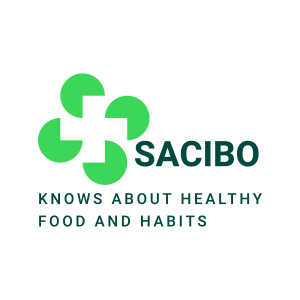
















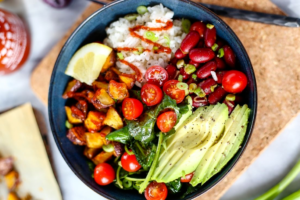






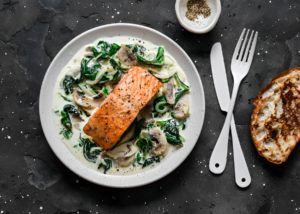















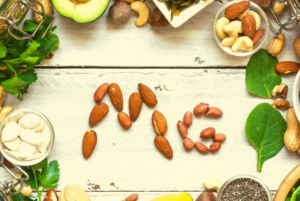








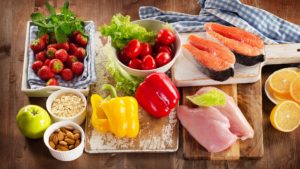

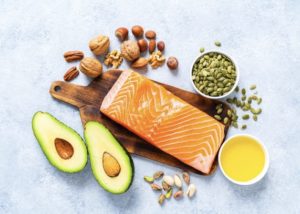












0 Comments